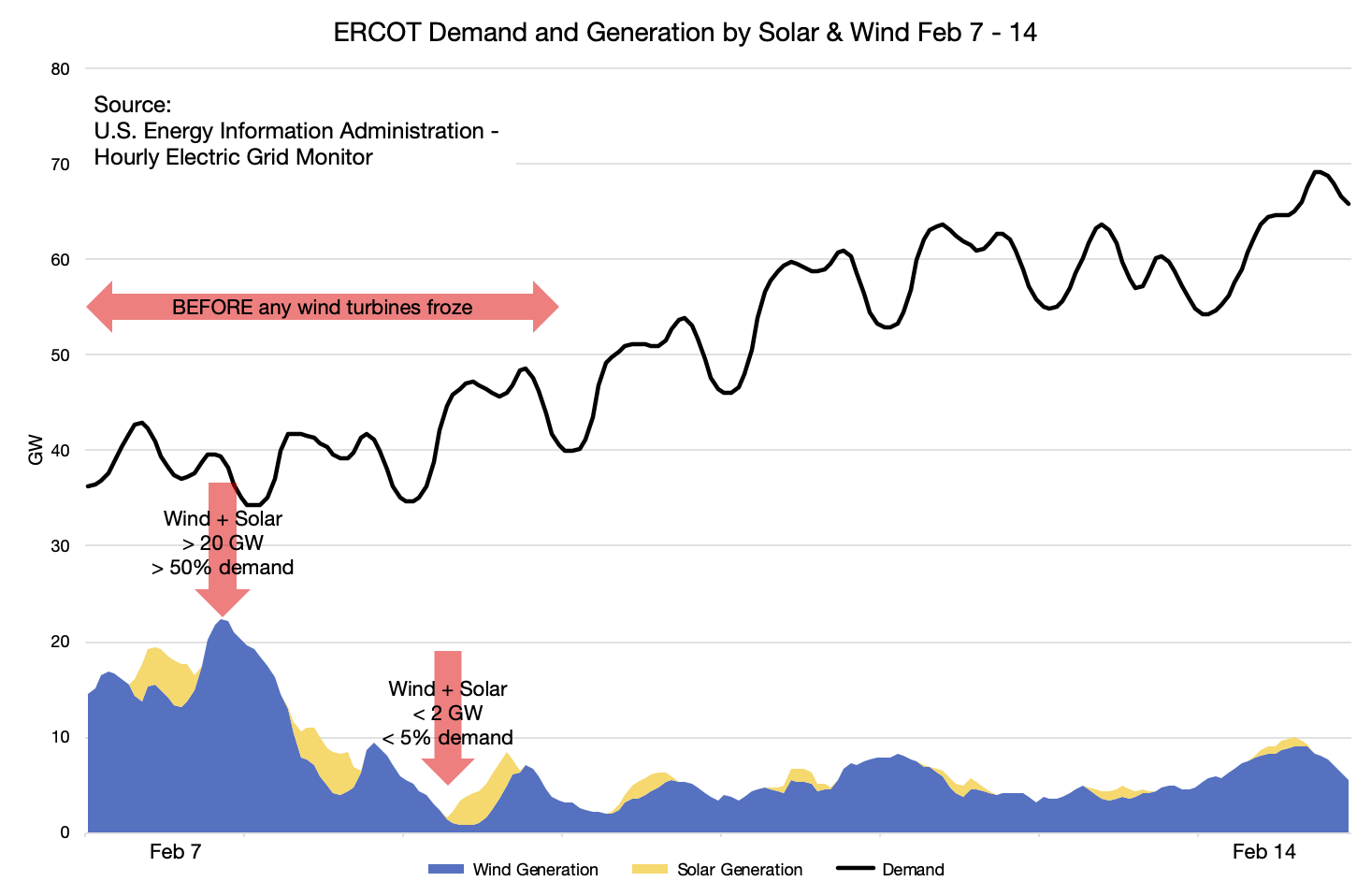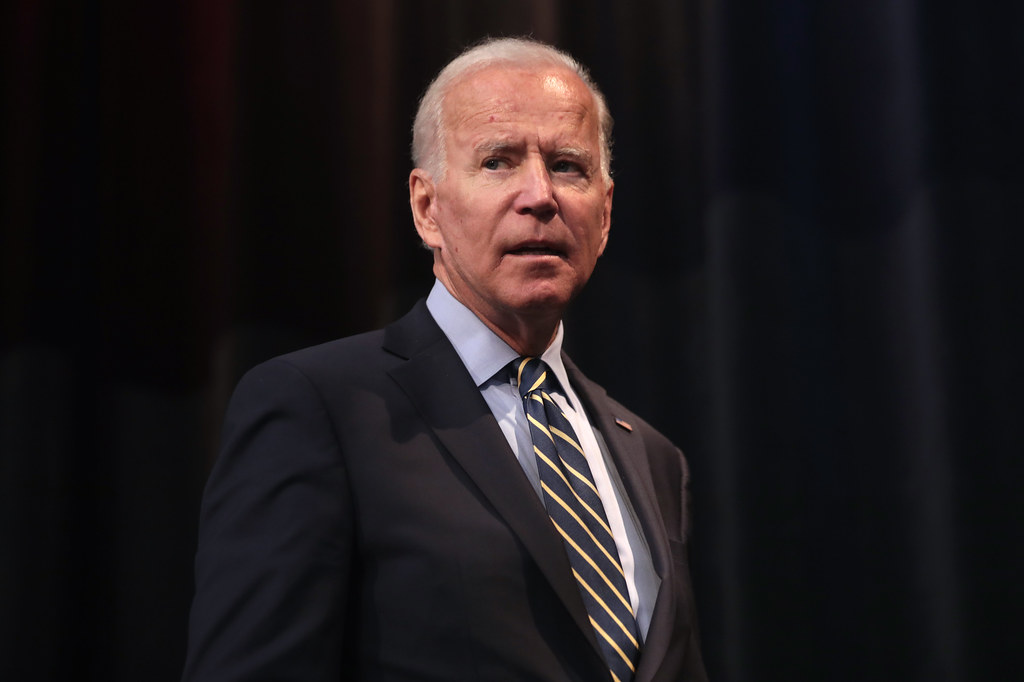Quick Summary
Today's EVs, despite promises that they would already surpass gasoline vehicles, are not cost-effective for the vast majority of Americans. That's why despite huge government subsidies, only 2% of us buy EVs . Mandating EVs violates our rights and hurts the poor most of all.1
EVs may become even less cost-effective in the future due to the rising electricity prices and growing electricity shortages that are occurring as reliable power plants are shut down in favor of unreliable solar and wind.2
Thanks to government mandates and subsidies, solar and wind--"unreliables"--provide about 10% of American electricity. This 10% has already caused big electricity price increases and huge reliability problems. Politicians should admit their failure, apologize, and reverse course.3
Instead of admitting that the US's 10% solar+wind electricity is causing huge cost and reliability problems, the Biden Administration is quintupling down on this disaster by pushing a "Clean Energy Standard" that would require minimum 50% solar+wind in 8 years!!4
This Administration's plan of mandatory EVs on a mandatory-solar-and-wind grid is a recipe for national immobility.
Consider the case of Germany, where at 37% solar and wind, the idea of “peak smoothing” is making its way into law. This would allow electricity providers to shut down consumers like EV charging stations and heat pumps to keep them from collapsing the grid.5
Imagine if, during the recent freeze, Texas was far more dependent on unreliable solar and wind--and it had a massive fleet of EVs that needed charging. The blackouts would have lasted for weeks. That's what the Biden administration has in store for us.6

The proper policy toward battery EVs is to let them compete on the open market with gasoline vehicles, natural gas vehicles, hydrogen vehicles, etc. And if you want to increase the competitiveness of all EVs, then stop screwing up the grid by mandating unreliable solar and wind.
In the future, EVs could benefit Americans and significantly reduce emissions if 1) competition makes them genuinely superior for most people 2) we dramatically increase electricity production using a low-cost, reliable, scalable technology--most likely nuclear.
If the Biden Administration wants to facilitate cost-effective EVs, the number one thing it needs to do is publicly reject the dictatorial Clean Energy Standard that would absolutely destroy our grid for existing electricity needs, let alone huge EV needs.
The idea that mandating EVs is some magic way of rapidly reducing CO2 emissions is absurd, because 1) EVs are largely FFVs--fossil fueled vehicles, and 2) The world, especially China and India, is going to keep using fossil fuels to develop and prosper.7
If you use an EV, it is powered with whatever sources of electricity are on your regional grid. Just as important, it was produced with whatever sources of energy power mining equipment, materials processing facilities, and factories. Most of those sources are fossil fuels.
Because there is no truly cost-effective, global-scale alternative to fossil fuels, today's EVs are mostly fossil fueled--from the electricity powering them, to the coal used to manufacture them, to the oil used to mine for their raw materials.8
Because today's EVs are largely FFVs--fossil fuel vehicles--in most places replacing a gasoline vehicle with an EV yields at most minor emissions reductions. But as EVs are often bought as supplements to a longer-range gasoline vehicle, buying a new EV often increases emissions.
What is the least cost-effective way to reduce CO2 emissions? As far as I know, it's to force Americans and automakers to pay Elon Musk to use fossil fuels to build a wealthy person a new second, third, or fourth car--powered by mostly fossil fuels.
The developing world overwhelmingly uses fossil fuels and plans to use more because that is by far the lowest-cost way for them to get reliable energy. Unreliable solar and wind can’t come close. That’s why China and India have hundreds of new coal plants under construction.9
The only way to lower CO2 emissions and benefit America is to promote innovation that makes low-carbon energy truly reliable and low-cost. Are China and India going to stop using fossil fuels so long as they are the lowest-cost option? They won’t and they shouldn’t.
The only practical way to lower global CO2 emissions is to encourage innovation that could make low-carbon energy cheap for everyone. Policies like mandating EVs or mandating solar/wind won’t stop global emissions from rising--but they will ruin America.10
References
-
Pew Research Center - Today’s electric vehicle market: Slow growth in U.S., faster in China, Europe↩
-
Electricity prices have systematically increased in the US as more renewables were adopted, despite growing use of low-cost natural gas. U.S. Energy Information Administration - Electricity Data Browser
California, where solar & wind generation increased from 1.5% in 2001 to 14.5% in 2018 (and imports increased from 24% to 31%), residential electricity prices escalated 70% since 2000, almost 30% faster than in the US as a whole. That doesn’t even include the costs of the 2020 blackout debacle, caused by the system operators inability to secure enough electricity imports when solar and wind failed.
U.S. energy Information Administration - Electricity data browser California Energy Commission - California Electrical Energy GenerationGerman household electricity prices have more than doubled to over 0.3€ per kWh ($0.35 per kWh depending on currency exchange rate) since 2000 when the modern renewable energy law started to massively incentivize solar and wind capacity on the German grid.
BDEW Strompreisanalyse Jul 2021 p. 7↩ -
U.S. Energy Information Administration - Electric Power Annual↩
-
A CES would mandate 80% "clean electricity” by 2030--but does nothing substantial to reverse the criminalization and defunding of nuclear. So nuclear will decrease from its 20% share today. Hydro, at <7% today, has little room for growth. That means >50% solar/wind!
U.S. Energy Information Administration - Electric Power Annual↩ -
Public generation of electricity was over 488 terawatt-hours in Germany for 2020, solar and wind combined generated over 37%. In 2002 they generated just over 3%.
Fraunhofer ISE energy-charts.deGerman household electricity prices have more than doubled to over 0.3€ per kWh ($0.35 per kWh depending on currency exchange rate) since 2000 when the modern renewable energy law started to massively incentivize solar and wind capacity on the German grid.
BDEW Strompreisanalyse Jul 2021 p. 7↩ -
As of January 2021, China is planning or constructing over 200 new coal-fired power plants with a combined capacity of over 247 GW. Global energy Monitor - Global Coal Plant Tracker
America’s Power - China’s Coal Fleet Continues to GrowThe largest increase in energy consumption is projected to come from non-OECD countries, but this might be underestimating future growth potential for the poorest regions in Africa. U.S. EIA International Energy Outlook 2019 reference case↩
-
Oil, coal, and natural gas provided over 80% of the global energy consumed.\ BP Statistical Review of World Energy 2020↩
